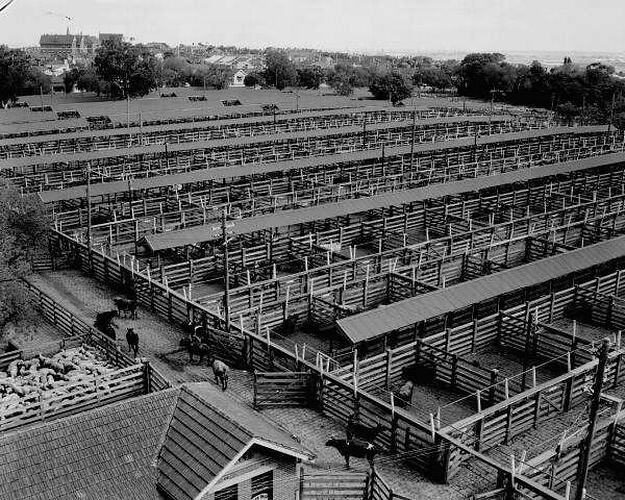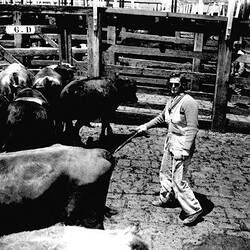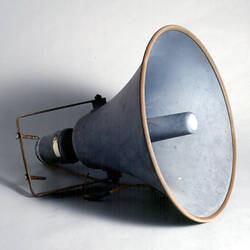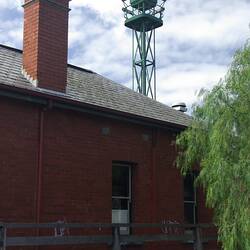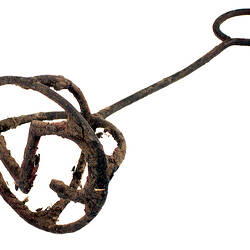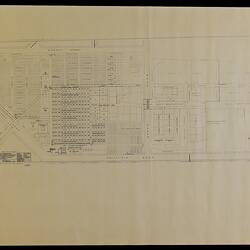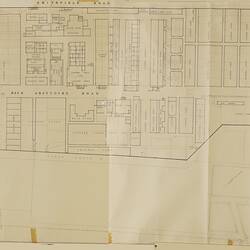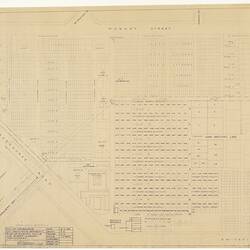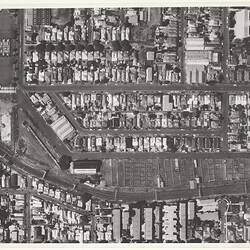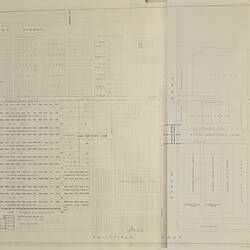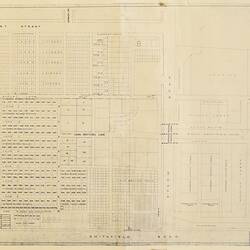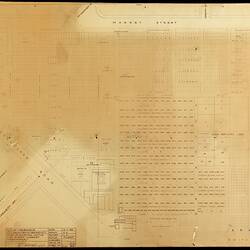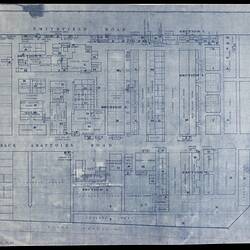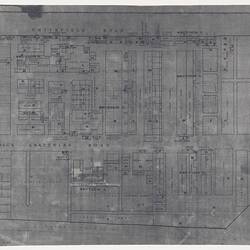The Newmarket Saleyards have often been described as a 'Town within a Town'. Over more than 130 years of operation the Saleyards grew to incorporate a post and telegraph office, police station, Stock & Land newspaper office, engineering maintenance workshop, carpenters' workshops, cricket club, dog club, Melbourne City Council offices, Stock Agents' offices, and radio broadcast programme. The Saleyards were a workplace to buyers, sellers, agents, auctioneers, vendors, drovers, stockmen, council staff, skin and hide valuers, carpenters, Department of Agriculture inspectors, Melbourne City Council health officers, railway livestock officials, motor transporters, veterinarians, newspaper men, policemen, and many more. Characteristic of the livestock industry from the mid 19th to the mid 20th century, the Newmarket Saleyards were predominantly a male domain. Over time, women worked in administration areas and became a more common sight droving and transporting. The Newmarket Saleyards were a thriving metropolis and the distinctive culture of Newmarket fostered a unique life integrated within the local community.
The main thoroughfare of Racecourse Road linked Newmarket's holding pens, sale pens, loading ramps and abattoirs, so the life of every local resident was entwined with the Saleyards. Many of the workers at the yards lived in the immediate vicinity and the Newmarket shops, hotels and cafes relied upon the workers and their families for much of their trade. The Newmarket workers and community sent their children to the local schools, and children in the area grew up playing in the streets and lanes surrounding the Newmarket Saleyards, watching drovers moving cattle along the laneways.
Establishment of the Newmarket Saleyards brought other associated trades to the area. Over time associated industries included meat works, butchers, sausage skin manufacturers, soap & candle works, tanneries, fellmongers, blood & bone manufacturers and manure works. Just outside the post and rail fence that surrounded Newmarket were numerous hotels where business deals big and small, arguments, news of the day and propositions of all kinds were exchanged and thrashed out.
The Saleyards were marked by the clatter of hooves, bellowing of cattle and the bleating of sheep; the barking of the drovers' dogs intermingled with the cracking of stockwhips and men's raised voices. Up until its closure in 1987, the Newmarket Saleyards survived as a hub where city and country merged, a rural environment within a bustling city, a unique town within a town.
References:
Gilbert, Beverley. 2005, The worn stockwhip: tracking down a past, Elton Publications, Mont Albert, Victoria.
Vincent, K. 1992, On the fall of the hammer: a personal history of Newmarket saleyards, Lee White ed, State Library of Victoria, Melbourne.
More Information
-
Keywords
Working Lives, Childhood, city & town life, Cultures and histories : Melbourne and Victoria
-
Authors
-
Article types
